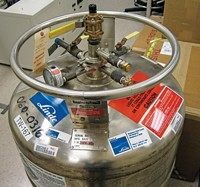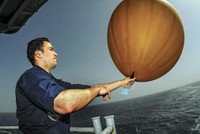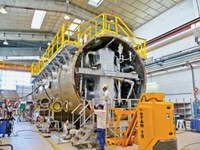Advertisement
Grab your lab coat. Let's get started
Welcome!
Welcome!
Create an account below to get 6 C&EN articles per month, receive newsletters and more - all free.
It seems this is your first time logging in online. Please enter the following information to continue.
As an ACS member you automatically get access to this site. All we need is few more details to create your reading experience.
Not you? Sign in with a different account.
Not you? Sign in with a different account.
ERROR 1
ERROR 1
ERROR 2
ERROR 2
ERROR 2
ERROR 2
ERROR 2
Password and Confirm password must match.
If you have an ACS member number, please enter it here so we can link this account to your membership. (optional)
ERROR 2
ACS values your privacy. By submitting your information, you are gaining access to C&EN and subscribing to our weekly newsletter. We use the information you provide to make your reading experience better, and we will never sell your data to third party members.
Materials
³He availability to increase with new supply deal
Stable helium isotope enables extreme cooling, down to a few millikelvin
by Craig Bettenhausen
December 21, 2021

The industrial gas giant Air Liquide has signed a long-term agreement to purchase helium-3 (3He) from a Canadian nuclear power firm. The arrangement creates the first significant private supply of the ultra-rare gas, a light isotope of helium used in deep cryogenics, nuclear science, and quantum computing.
Air Liquide will take 3He that Laurentis Energy Partners extracts from a nuclear power byproduct, further purify it, and package it for sale. Jennifer Chapin, director of projects at Laurentis, says the initial output will be between 5,000 and 10,000 L per year. “This really does present a shift in terms of market availability,” she says.
How low can you go?
3He dilution cooling can get a system close to absolute zero
Room temperature: 20 °C (293.15 K)
Water ice: 0 °C (273.15 K)
Dry ice in an acetone bath: −78 °C (195 K)
Circulating liquid nitrogen: −195.8 °C (77 K)
Circulating liquid helium: −268.9 °C (2.4 K)
Helium evaporation: as low as −272.15 °C (1 K)
3He dilution: as low as −273.145 °C (0.005 K)
Though the gas can be used for medical imaging and other nuclear science, Patrick Wikus, a cryogenics expert at the scientific instrument maker Bruker, expects the main application of the new supply to be in quantum computing, which requires operating temperatures near 0 K.
Conventional liquid 4He cooling gets down to 1–4 K. To go even colder, scientists mix super-cooled 3He and 4He; the entropy gain from the mixing cools the system down even further. Called 3He-4He dilution, the process can get as low as 5 mK.
Adding 3He to a typical chiller costs $30,000 to $40,000, Wikus says, at a cost today of around $1,000 per L. At that price, recycling is a must. “When I did my PhD, I had 20 L of 3He. If I had lost those, that would have been it for my thesis,” he says.
Wikus says the new supply could lower the barrier to entry for quantum computing. In September, Air Liquide made an initial investment in this area when it purchased an 80% stake in the 3He-4He dilution equipment maker CryoConcept.
The main way 3He forms on Earth is from the radioactive decay of tritium, a heavy isotope of hydrogen. 3He itself is not radioactive.
The US and Russian militaries use tritium to boost the destructive power of some nuclear weapons; the 3He available today typically comes from its removal from bombs to maintain high tritium concentrations. Most of it stays in government hands for use in neutron detectors by port inspectors looking for smuggled nuclear materials.
A type of nuclear power plant called a pressurized heavy-water reactor also produces tritium as a waste stream. In November, Laurentis started extracting 3He from the tritium stock at the Darlington Nuclear Generating Station near Toronto, which is owned and operated by Laurentis’s parent company, Ontario Power Generation.
Chapin says the nuclear power industry has missed opportunities by treating as waste things that could be valuable feedstocks. “There’s a number of places where we did a really lousy job of looking forward and accommodating for future uses of byproducts,” she says. In addition to 3He production, for example, Laurentis is working on medical isotopes. “We need to figure out how to build that in better,” Chapin says.





Join the conversation
Contact the reporter
Submit a Letter to the Editor for publication
Engage with us on Twitter